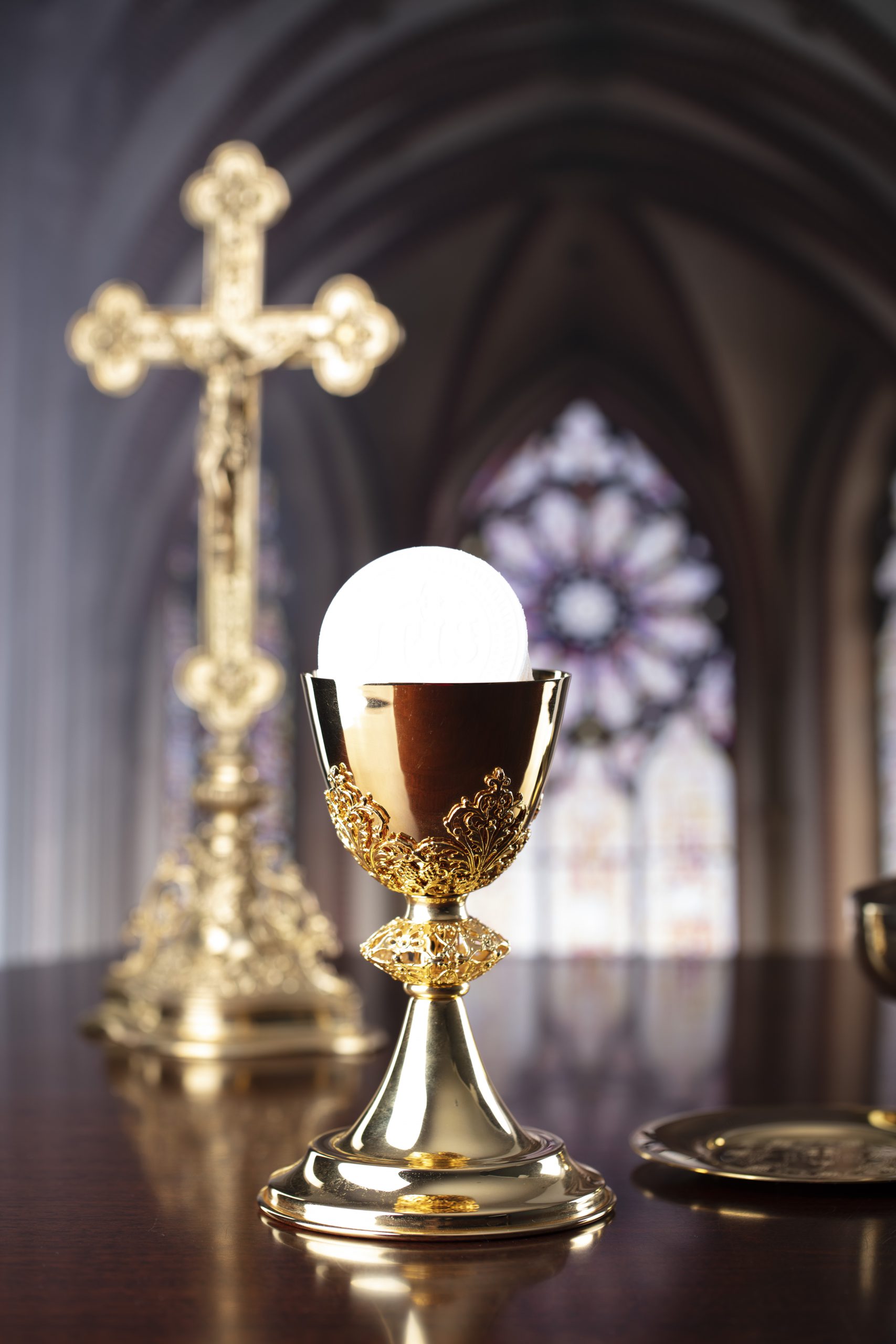
Question:
How can I explain the real presence of Jesus in the Eucharist when people ask about it?
Answer:
We’ve been addressing this question as a series in this column, beginning with the May 2022 issue. The kickoff in June of the National Eucharistic Revival makes this summer the perfect time to really hone in on how to explain the real presence of Jesus in the Eucharist.
In the last two months’ columns, we’ve been looking at the deep biblical roots of the Mass in the Old Testament in order to see how the Mass did not appear out of thin air, but in fact has ancient origins in the Word of God. This month, we’re going to begin an exploration of the final Old Testament roots of the Mass, which we’ll explore in this series: the Old Testament showbread of the Temple, also known as the Bread of the Presence.
While this particular biblical root of the Eucharist isn’t as well known as the manna in the desert, and certainly not as well known as the Passover connection, it nonetheless provides considerable illumination for our understanding of the Mass and the Eucharist, and how God once again was preparing his people for these gifts centuries before Jesus gave them to us. Let’s dig in.
Most people are not only unfamiliar with the connection between the Eucharist and the Bread of the Presence, but with the Bread of the Presence itself as well. However, it’s referred to several times in the Old Testament, and two instances in particular stand out. The first is the detailed description of the Bread of the Presence which we find in the book of Exodus.
In Exodus we read about the portable temple—the tabernacle—that Moses created according to God’s specific instructions after the Exodus while the Israelites were in the desert at Mount Sinai. There were three sacred objects God commanded Moses to make and keep inside the tabernacle (Ex 25): the Ark of the Covenant, the menorah or golden lampstand, and the golden table of the Bread of the Presence. All three were kept within the holy place of the tabernacle, with the ark in the most sacred space, the Holy of Holies. And according to Exodus (25:40), all three sacred objects were patterned after heavenly realities Moses saw in a vision on Mount Sinai.
The third object is the one of interest to us today: the golden table of the Bread of the Presence. This table is detailed in Exodus 25:23-30. There, we read that this table is covered with pure gold, and with rings fastened to it so it can be carried with poles. Like the ark, it seems it is not to be touched. We also see that the table didn’t hold just bread… there’s reference to flagons and bowls—also made of pure gold—for the pouring of libations.
What are libations? Sacrificial drink offerings of wine. Jewish scholars have noted that while in other wine offerings, the wine was poured out by the priests, in this case, the wine was drunk in a sacred meal. So we have a table that is the golden table of the bread, and wine of the Presence, wine that was consumed by the priest!
A brief comment on the name of this bread. As I mentioned previously, it’s sometimes translated as “showbread”… that’s how the first major English translation of the Bible (the King James Version) translated the Hebrew term used. More modern translations use the form I’ve been using, “the Bread of the Presence.”
But some scholars note the Hebrew word here translated as “presence” is almost always translated as “face” in the Old Testament, and therefore the most literal translation of the term is “the bread of the face.” That is, this bread is the Bread of the Face of God. Somehow, the bread itself is a visible sign of the very face of God.
This understanding of the bread is confirmed when we recall when the bread was first given to the Israelites. As we read, the details are given in Exodus 25, but immediately prior to that, in Exodus 24, we read that Moses and the elders of the people participated in a heavenly banquet on Mount Sinai, in which they beheld God and ate and drank (9-11).
So, we have this banquet, in which Moses and the elders saw God while they were eating and drinking, and immediately after, God commands Moses to build the golden table of the Bread of the Face. Scholars see in this that the bread was meant to be a kind of memorial of that heavenly banquet. Just as the tabernacle itself is a visible sign of the invisible heavenly place of God that Moses saw on Mount Sinai, so, too, is the earthly Bread of the Face a visible sign of the invisible face of God!

Be sure to check out the additional resources at sfcatholic.org/answer. If you have a question you need an answer to, email cbassett@sfcatholic.org.
Chris Burgwald holds a doctorate in theology and is the director of discipleship formation for the Diocese of Sioux Falls.


